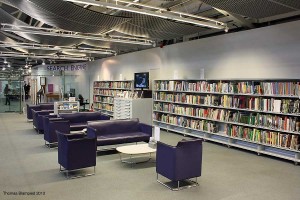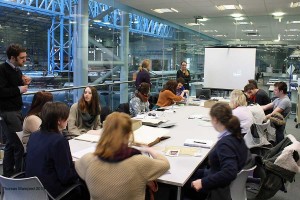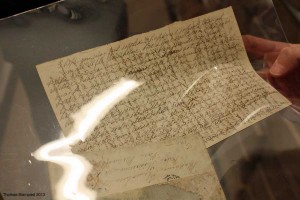Trip Report: Search Engine at the National Railway Museum
Anyone with an interest in British railways, or even railways in general, will likely be familiar with the National Railway Museum (NRM) in York. Reported to be the largest railway museum in the world, the NRM is also one of the most popular tourist attractions in the north of England. While most people come to marvel at the rolling stock on display or to reminisce about the past while soaking in the atmosphere, there is a lot going on behind the scenes as well.
In 2007, the NRM refurbished its archive and opened it to the public. Dubbed the Search Engine, the archive contains many interesting collections, many of which were moved from other museums to provide a more central repository. Some of the highlights include:
- British Rail works records, including engineering drawings
- Railtrack records (currently off-limits to the public, but preserved for future generations of researchers)
- Robert Stephenson & Co. records
- Pullman blueprints
- The Hackworth family archive contains, among other things, a colourful collection of private letters whose contents often included the instruction “burn this letter” – luckily people rarely follow directions!
Search Engine is also home to an enormous collection of photographs, prints, posters and paintings (in fact, the largest collection of oil paintings in Yorkshire).
A limited amount of the collection is available online and the NRM is currently working on improvements to their database to make it easier to find items (currently, researchers need to work through over 200 PDF documents to locate specific records).
York’s railway heritage made it an ideal place for the study of railways. In 1995, the University of York joined with the NRM to form the Institute of Railway Studies and Transport History, which offers graduate degrees and distance learning courses in the history of transportation. Given the interest in transport history at the University, there are often undergraduate options in transport history (depending on staff availability). Currently, I am taking a second-year history class called “Travel and Tourism in 19th and 20th Century Britain.” The class focuses on what people did on holiday, how they got there and has concentrated heavily on the transportation of people by rail. As part of the class, we had a field trip to the NRM and were given a chance to tour the Search Engine vault deep in the bowels of the Museum as well as the opportunity to examine a selection of the NRM’s artefacts up close.
Search Engine isn’t the only railway archive in the UK. Many records are also stored at the National Archives, which has produced a useful guide explaining where to find different kinds of railway records around the country. Click here to see the guide.
There is an active community of railway scholars (both academics and amateurs) in the UK. To keep up to date, visit their mailing list by clicking here.
Search Engine is open daily (except 24-26 December) from 10am-5:30pm. Visit their website by clicking here.
Special thanks to my fellow students, Dr. Jon Howlett, Alison Kay and the rest of the Search Engine staff for helping with this report.
Posting and photos by Thomas Blampied
Click on each image for a closer look!
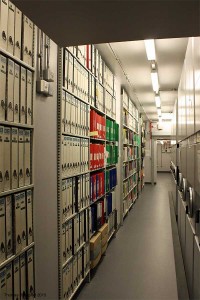 |
| The vault is temperature and humidity controlled and covers two storeys. This view shows part of the document store. . |
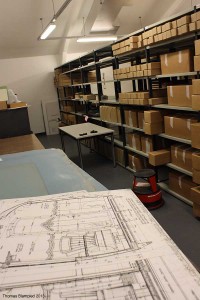 |
| The collection of technical drawings is one of the most popular parts of Search Engine’s records and is often used by railway modellers. . |
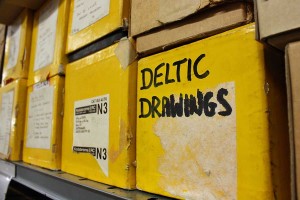 |
| One of the most popular items in the collection of technical drawings: plans for the Class 55 “Deltic” diesel locomotives. . |
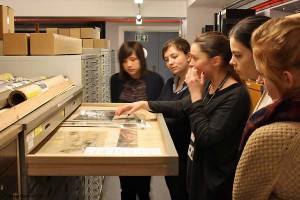 |
| Examining part of the photograph and print collection. . |
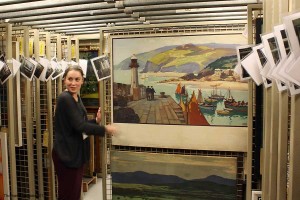 |
| Alison Kay, one of the NRM’s archivists, shows off some of the works in the Museum’s collection of paintings. |


